Health Care > EXAM > ATLS EXAM WITH QUESTIONS AND ANSWERS 2022 SOLUTIONS ALL CORRECT ANSWERS ARE HIGHLIGHTED (All)
ATLS EXAM WITH QUESTIONS AND ANSWERS 2022 SOLUTIONS ALL CORRECT ANSWERS ARE HIGHLIGHTED
Document Content and Description Below
A 22-year-old man is hypotensive and tachycardic after a shotgun wound to the left shoulder. His blood pressure is initially 80/40 mm Hg. After initial fluid resuscitation his blood pressure increas... es to 122/84 mm Hg. His heart rate is now 100 beats per minute and his respiratory rate is 28 breaths per minute. A tube thoracostomy is performed for decreased left chest breath sounds with the return of a small amount of blood and no air leak. After chest tube insertion, the most appropriate next step is: ANS: re-examine the chest A construction worker falls two stories from a building and sustains bilateral calcaneal fractures. In the emergency department, he is alert, vital signs are normal, and he is complaining of severe pain in both heels and his lower back. Lower extremity pulses are strong and there is no other deformity. The suspected diagnosis is most likely to be confirmed by: ANS: complete spine x-ray series What is true regarding the initial resuscitation of a trauma patient? ANS: Evidence of improved perfusion after fluid resuscitation could include improvement in Glasgow Coma Scale score on reevaluation In managing a patient with a severe traumatic brain injury, the most important initial step is to: ANS: secure the airway A previously healthy, 70-kg (154-pound) man suffers an estimated acute blood loss of 2 liters. What applies to this patient? ANS: An ABG would demonstrate a base deficit between -6 and -10 mEq/L. The physiological hypervolemia of pregnancy has clinical significance in the management of the severely injured, gravid woman by: ANS: increasing the volume of blood loss to produce maternal hypotension. The best assessment of fluid resuscitation of the adult burn patient is: ANS: urinary output of 0.5 mL/kg/hr The diagnosis of shock must include: ANS: evidence of inadequate organ perfusion A 7-year-old boy is brought to the emergency department by his parents several minutes after he fell through a window. He is bleeding profusely from a 6-cm wound of his medial right thigh. Immediate management of the wound should consist of: ANS: direct pressure on the wound For the patient with severe traumatic brain injury, profound hypocarbia should be avoided to prevent: ANS: cerebral vasoconstriction with diminished perfusion After being involved in a motor vehicle crash, a 25-year-old man is brought to a hospital that has surgery capabilities available.. Computed tomography of the chest and abdomen shows an aortic injury and splenic laceration with free abdominal fluid. His blood pressure falls to 70 mm Hg after CT. The next step is: ANS: perform an exploratory laparotomy [Show More]
Last updated: 10 months ago
Preview 1 out of 31 pages
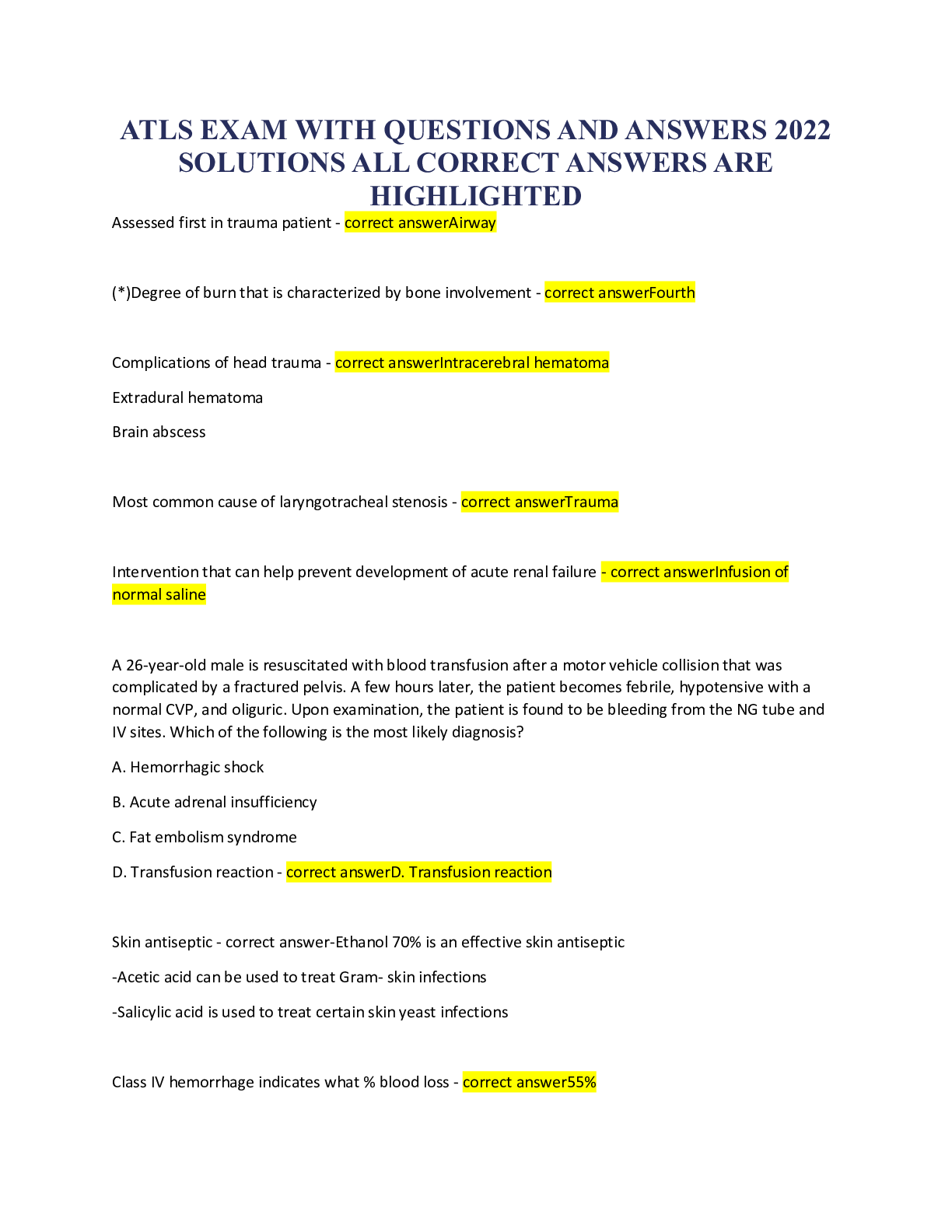
Reviews( 0 )
Document information
Connected school, study & course
About the document
Uploaded On
Oct 12, 2022
Number of pages
31
Written in
Additional information
This document has been written for:
Uploaded
Oct 12, 2022
Downloads
0
Views
42

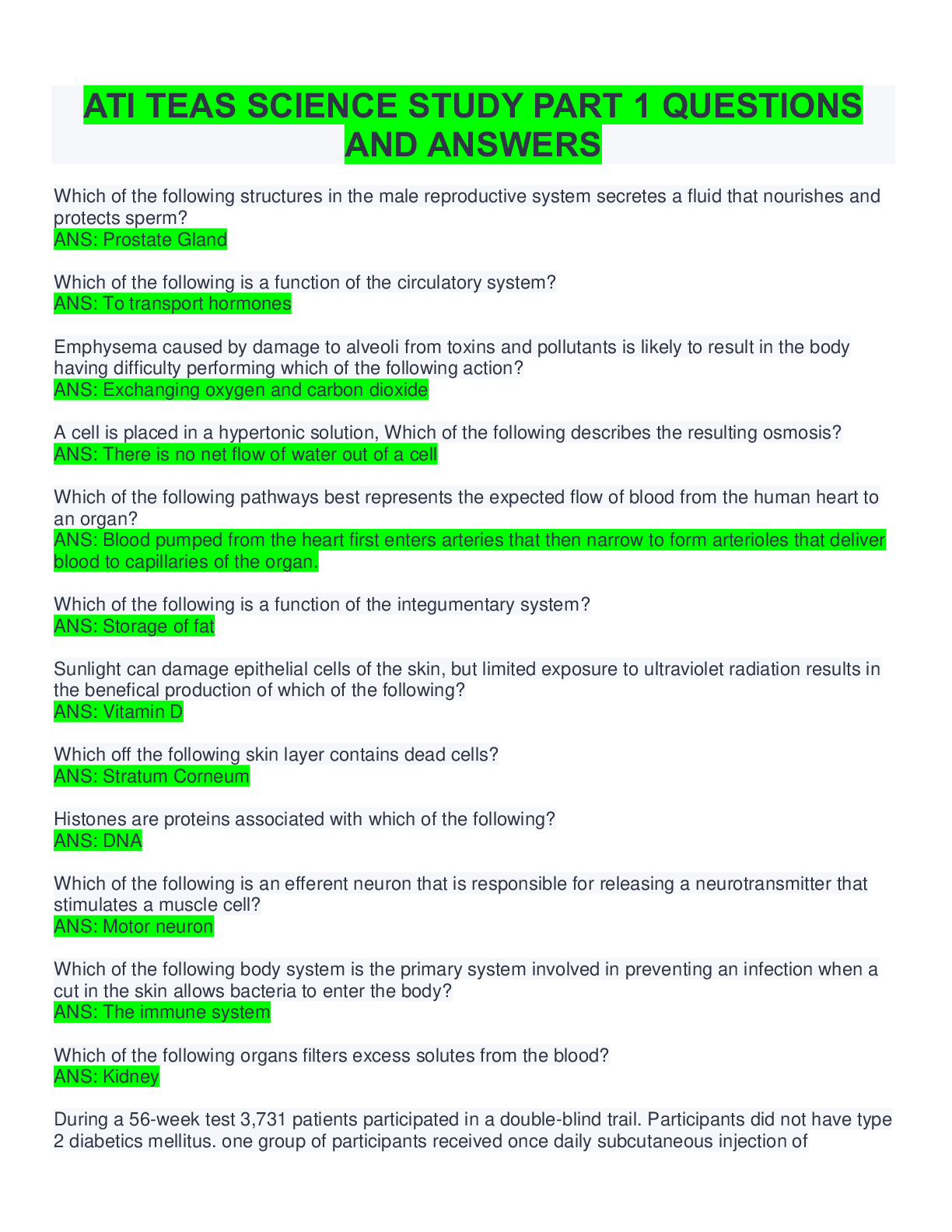
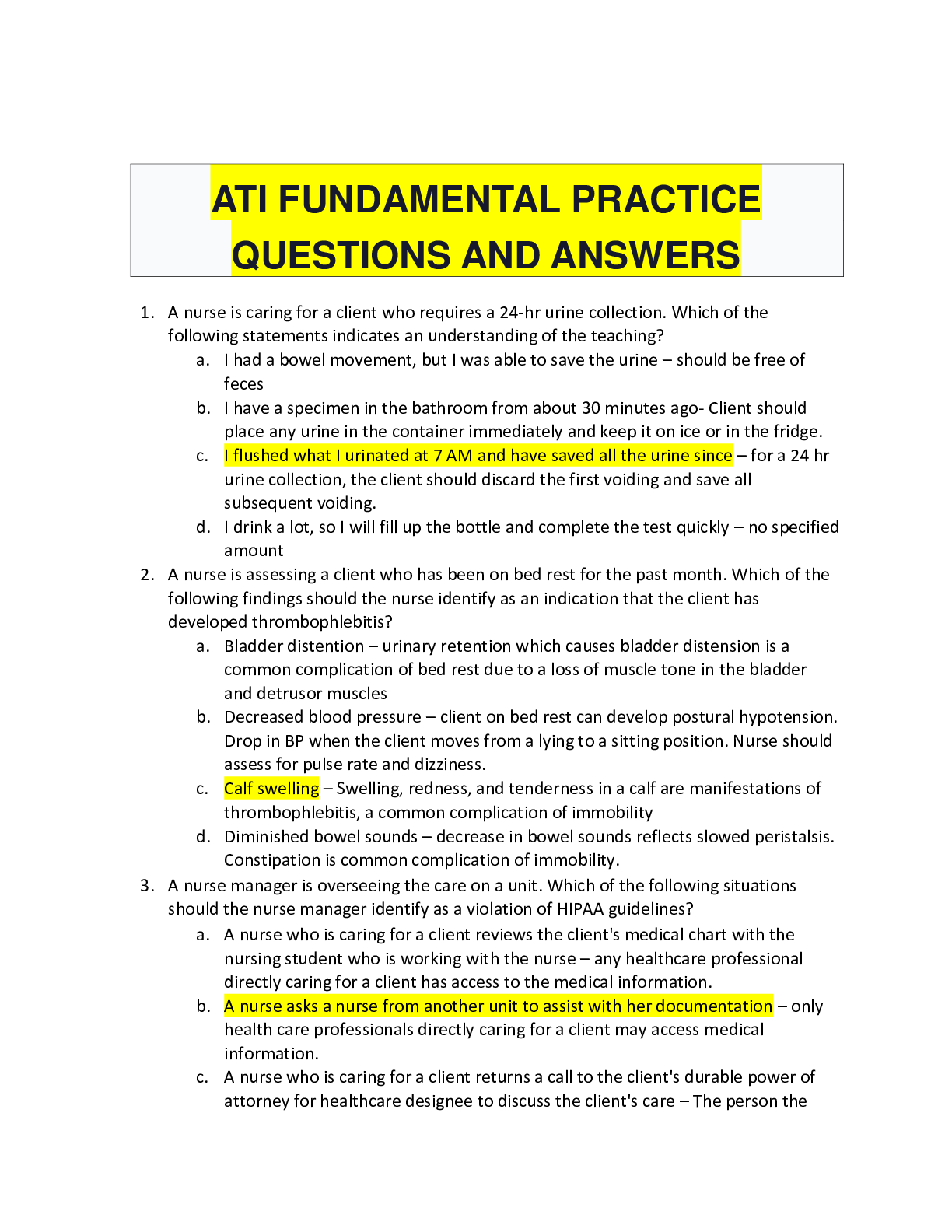
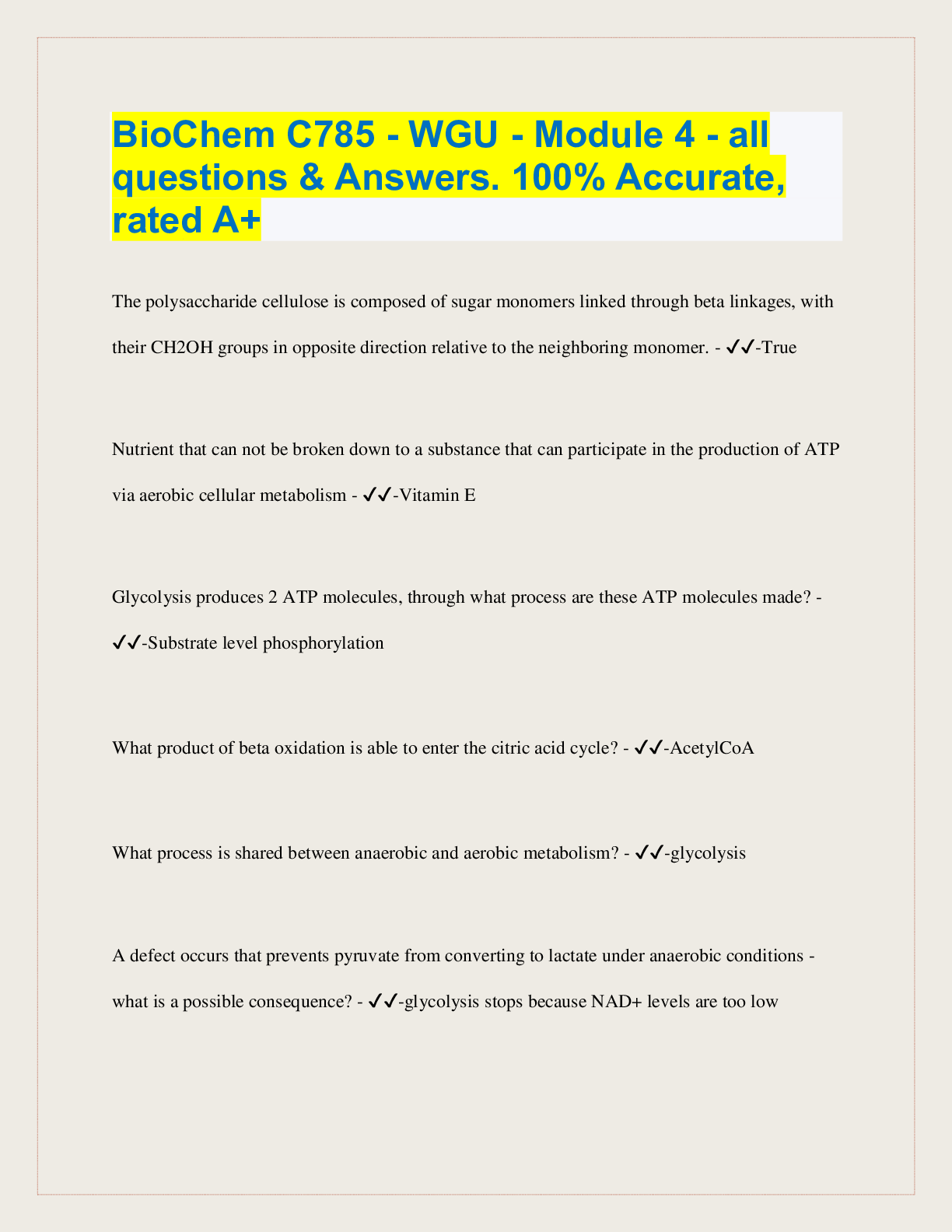
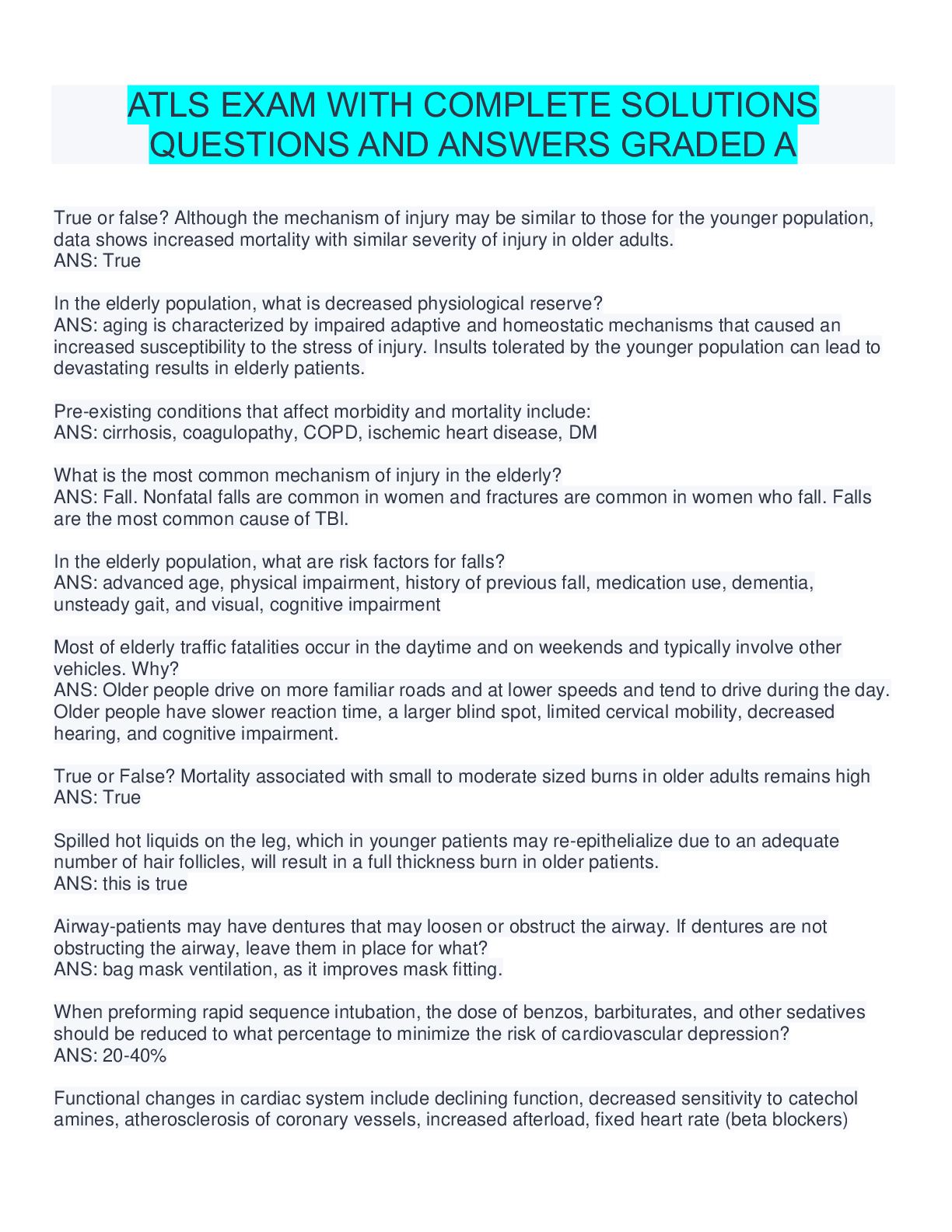
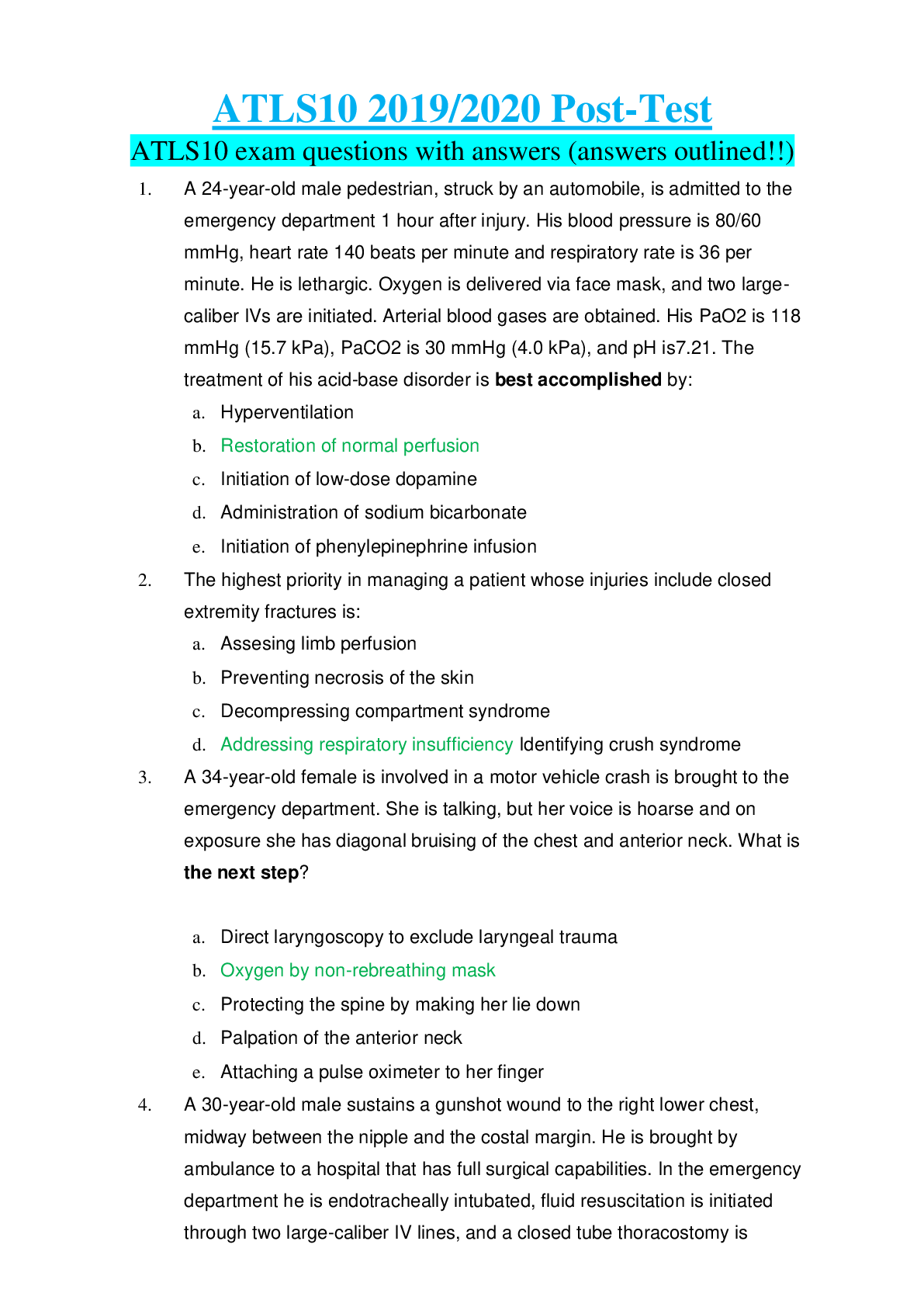
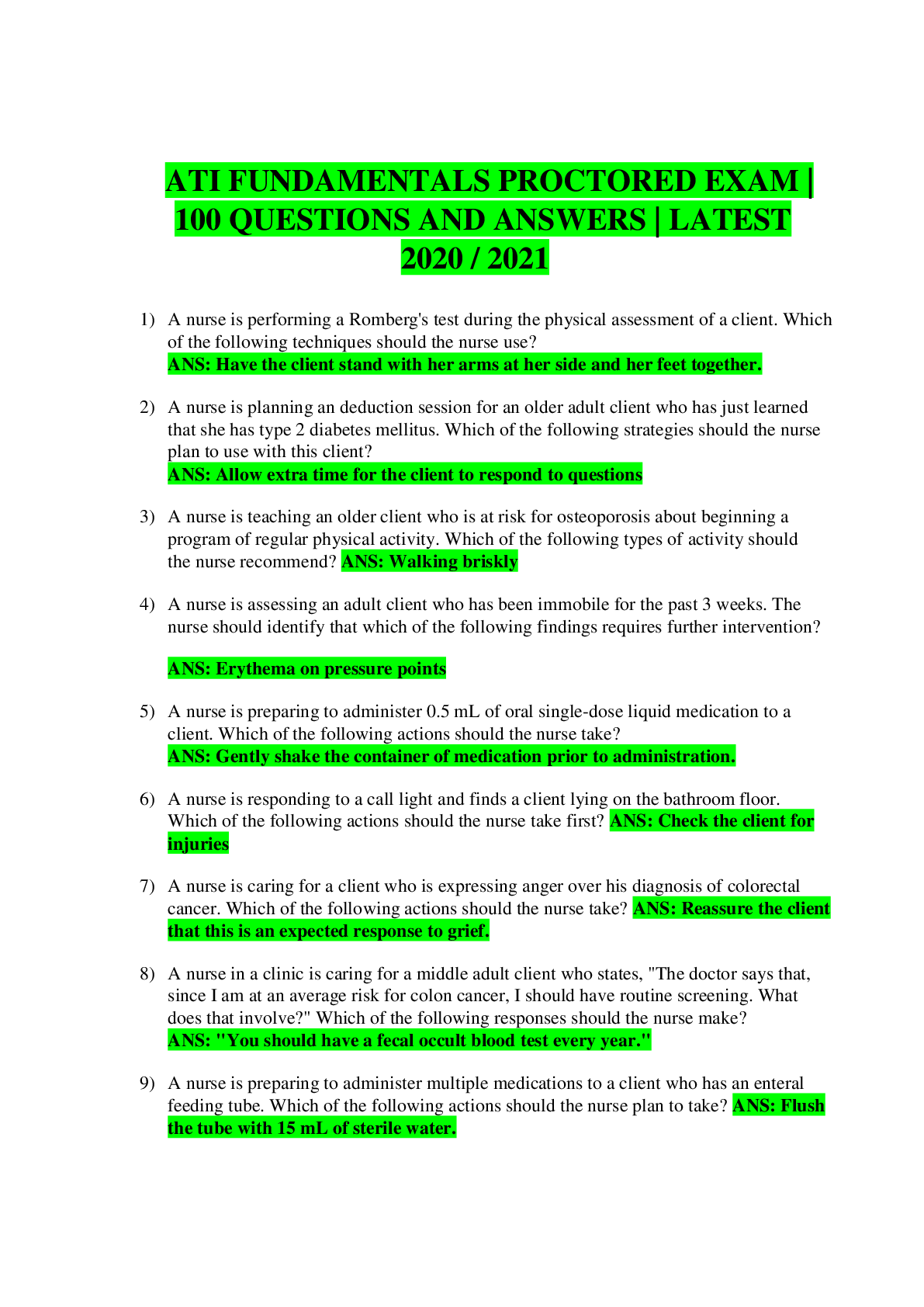
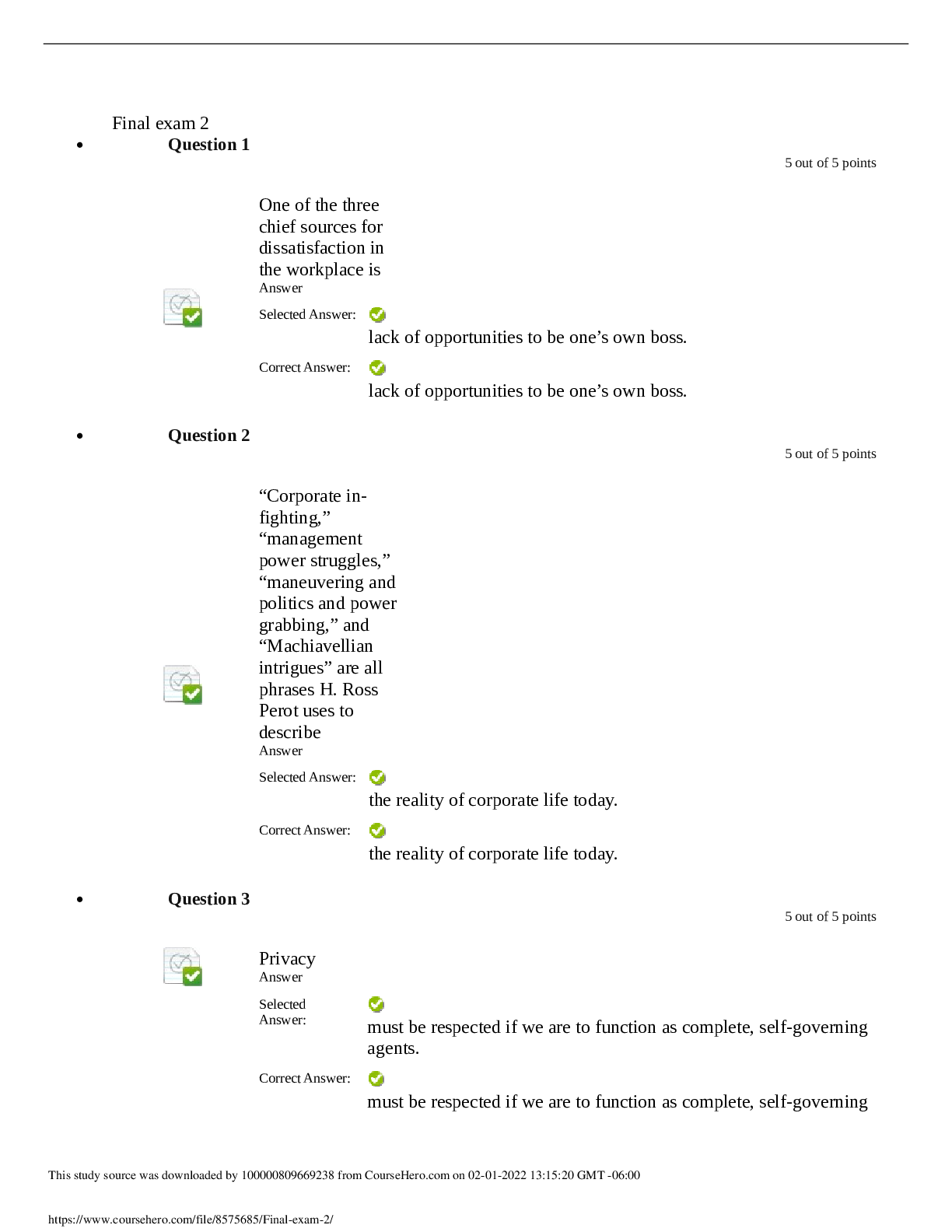


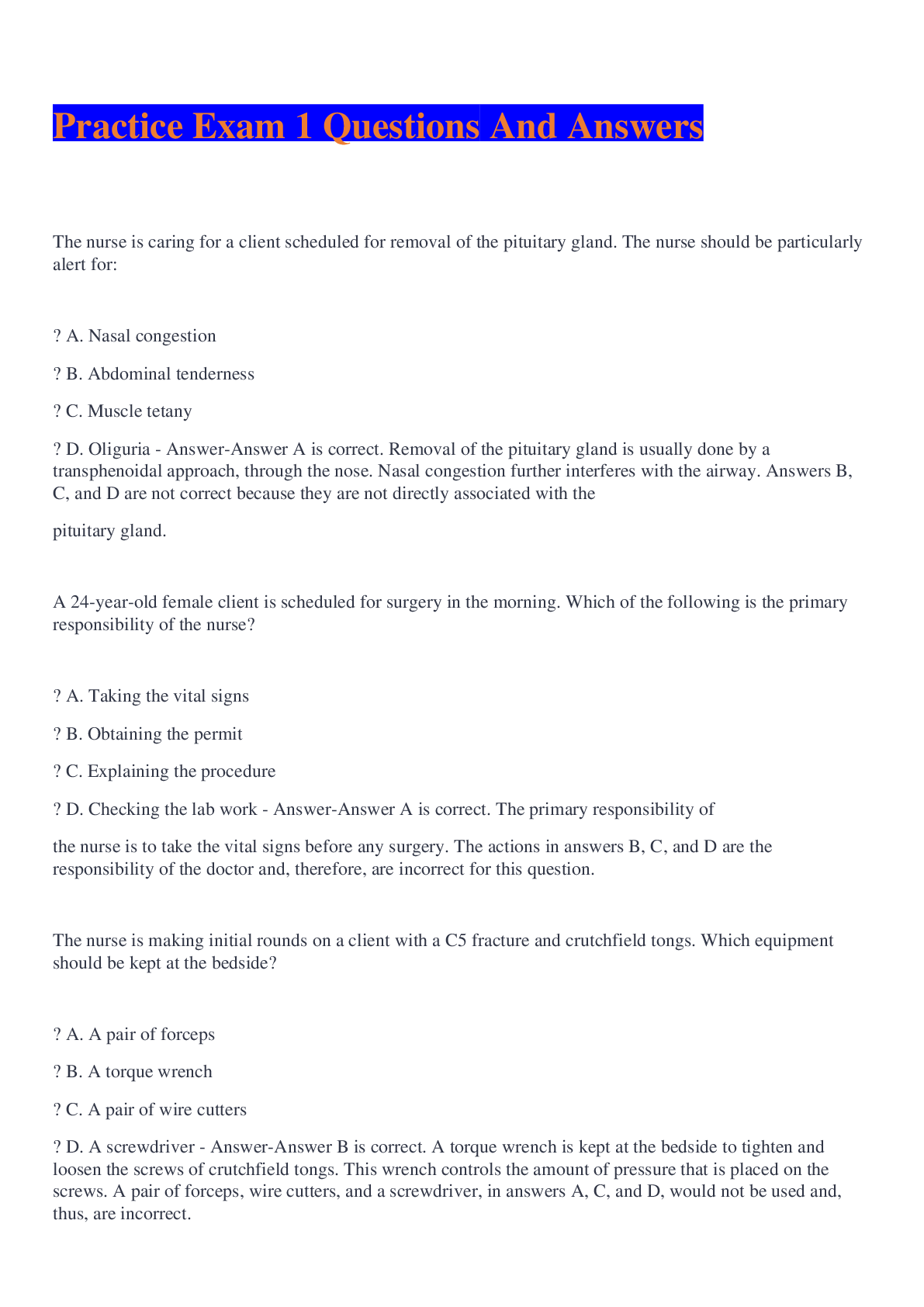
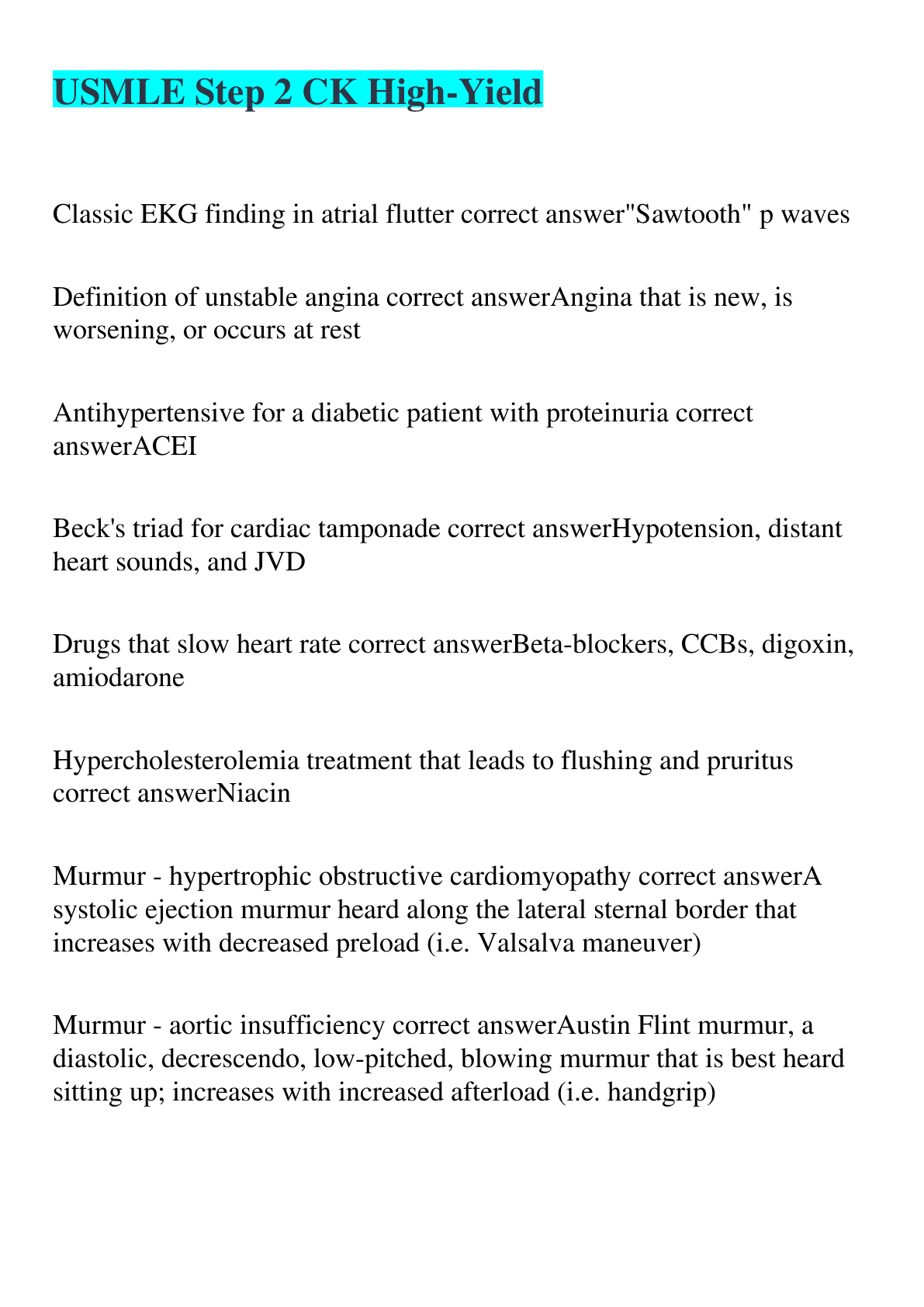
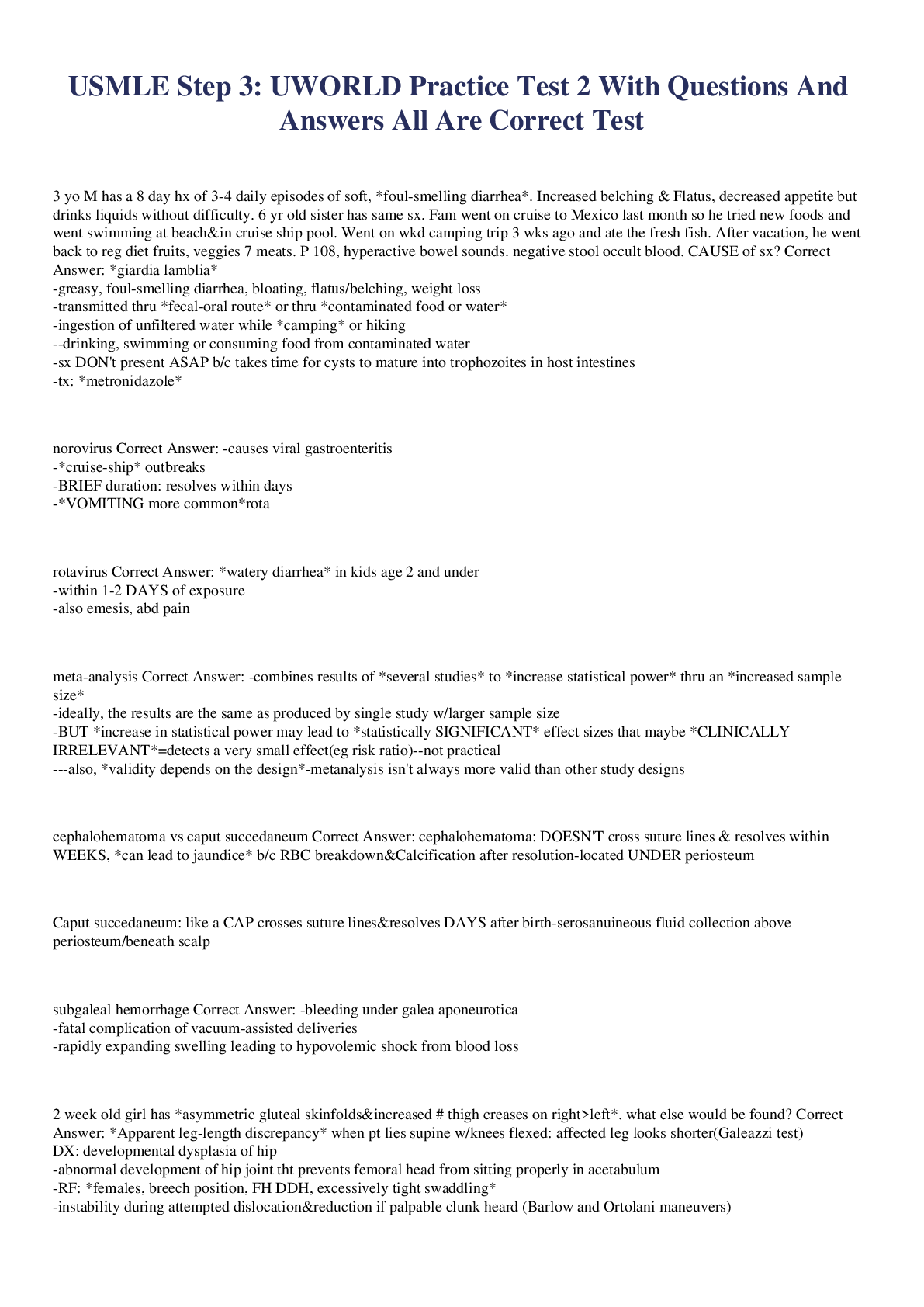
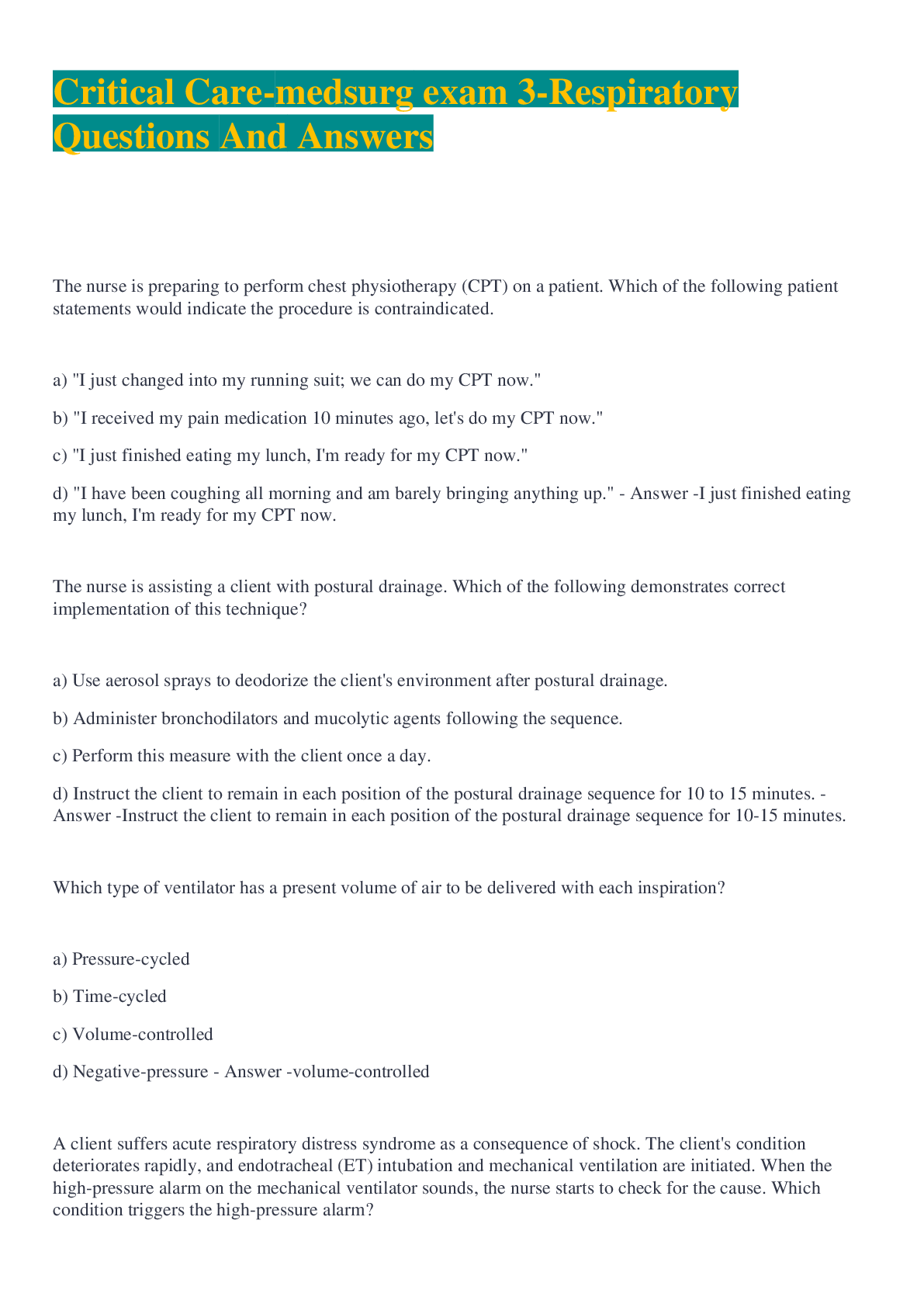

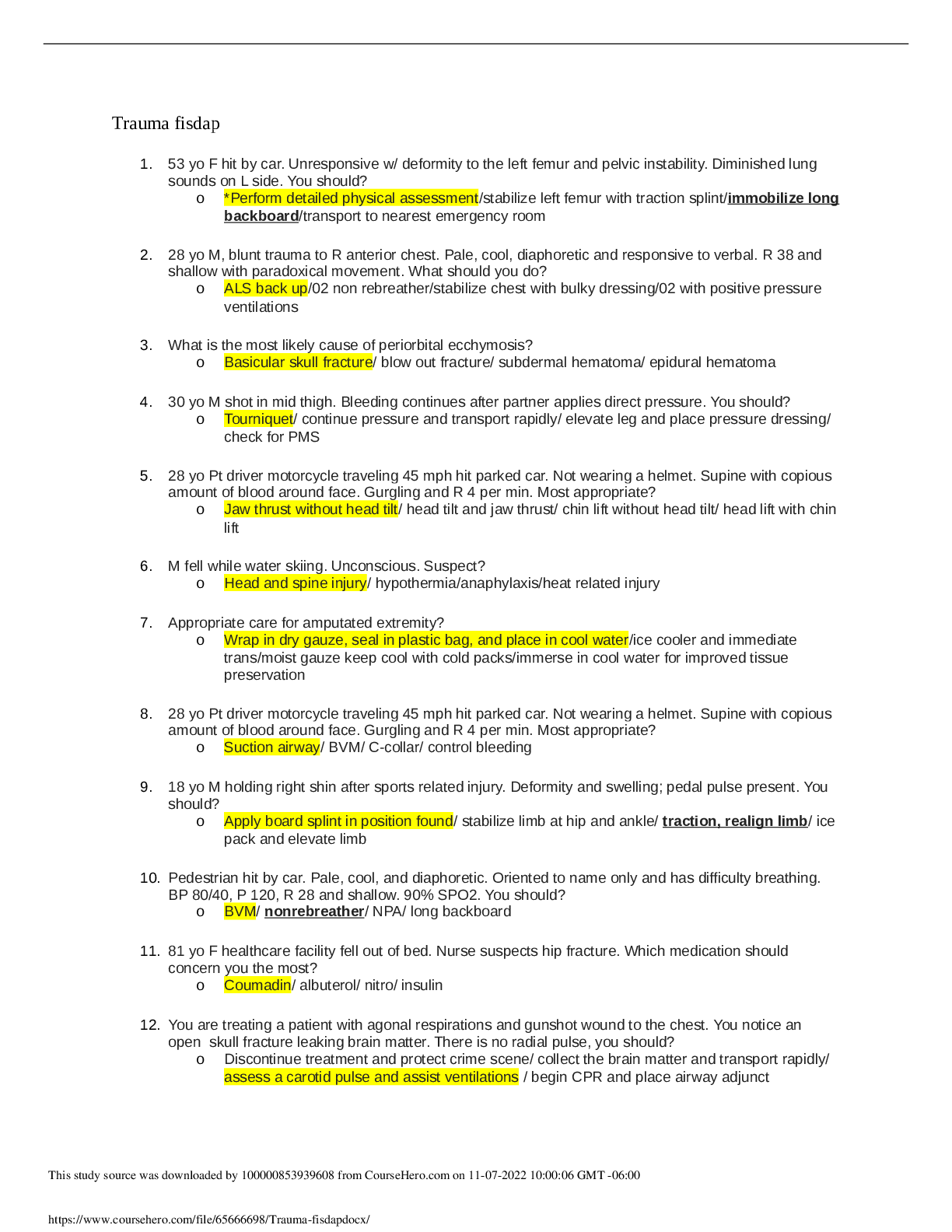
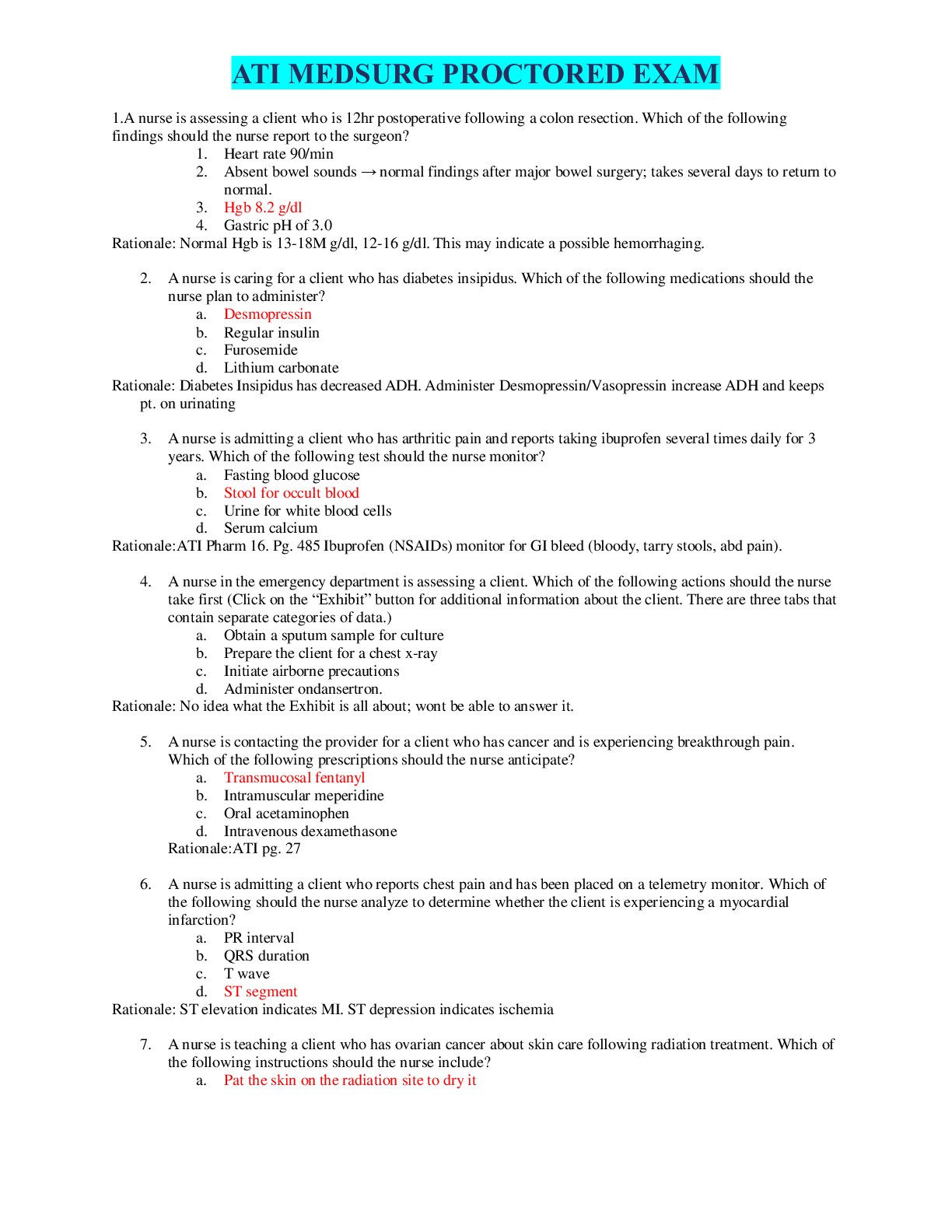
 (1).png)

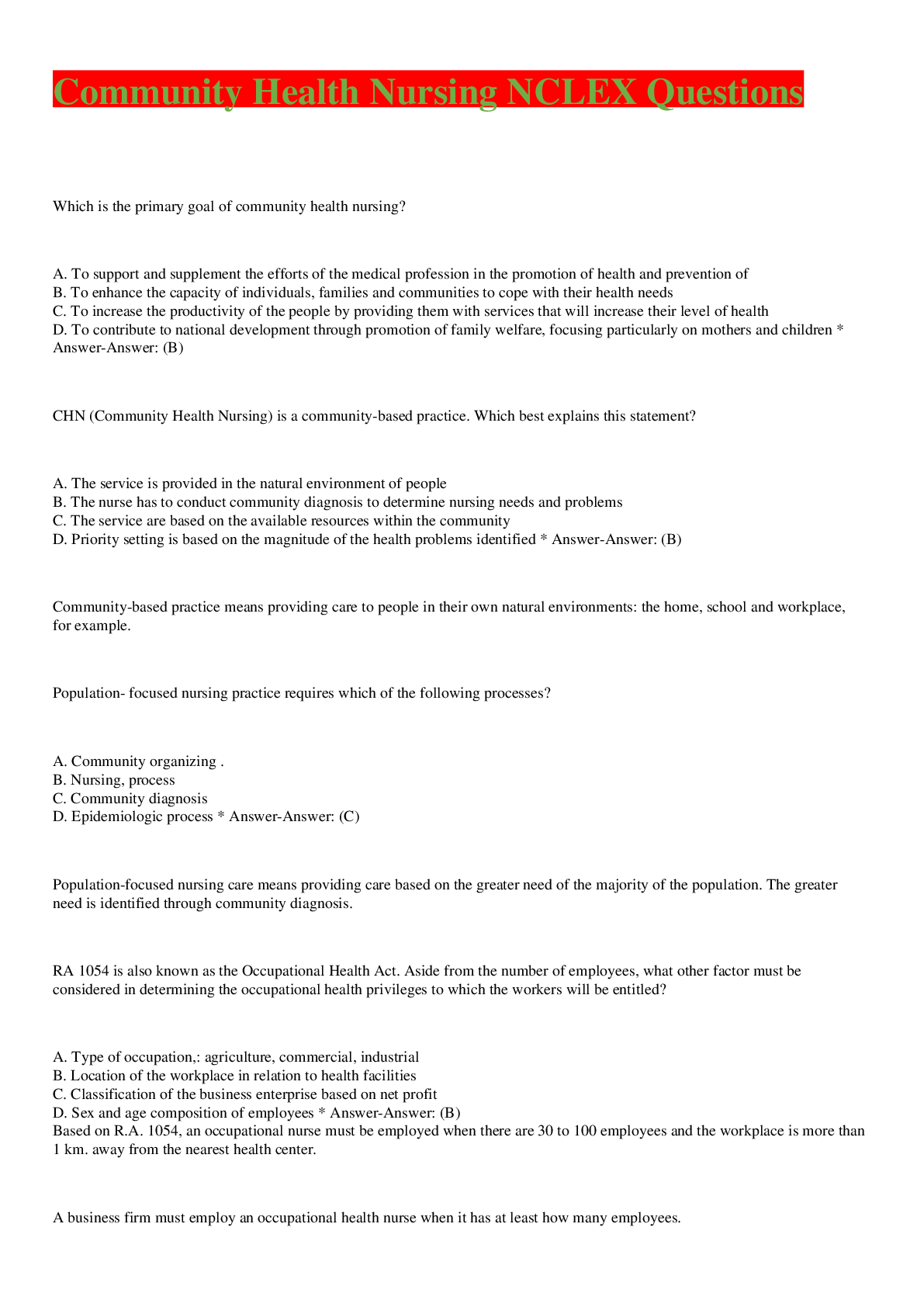
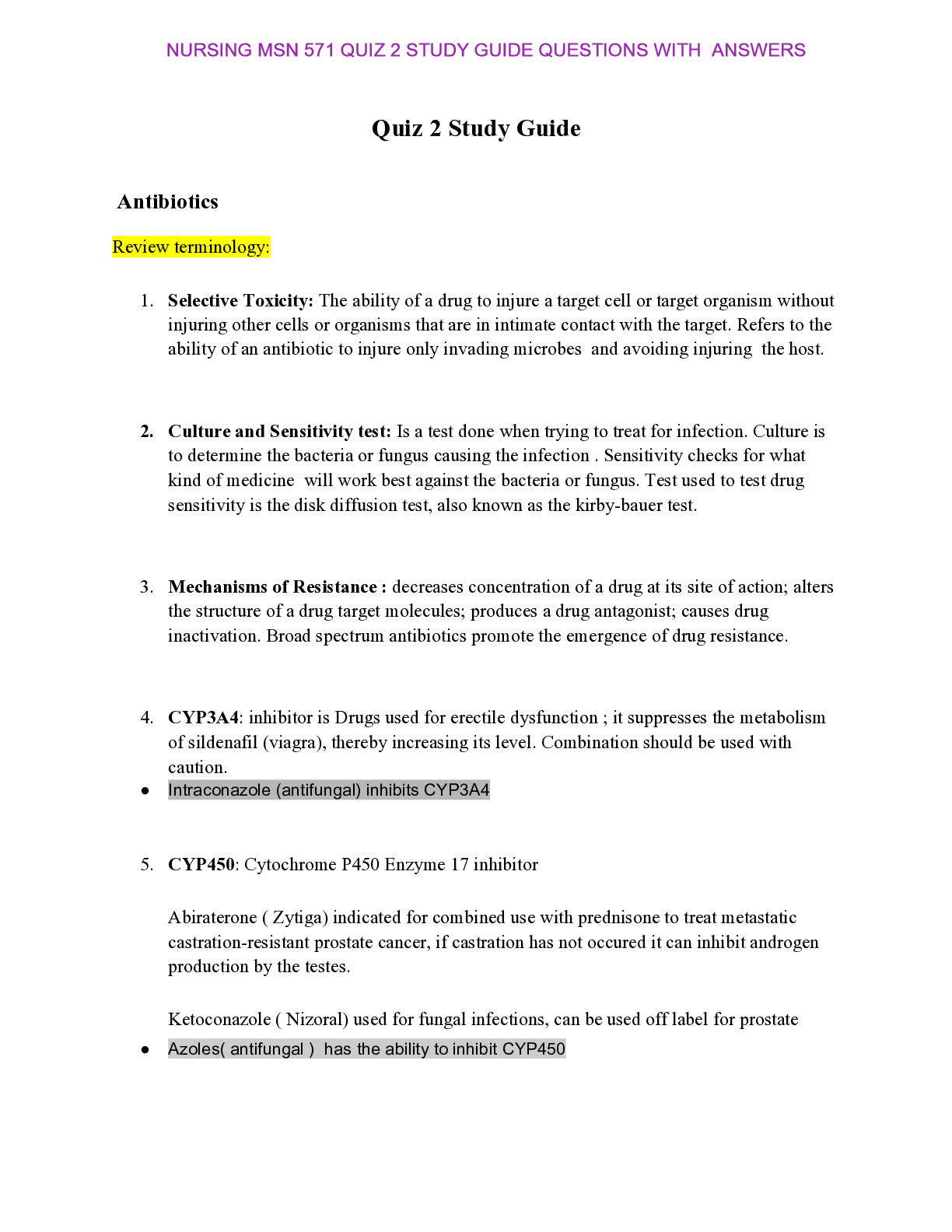
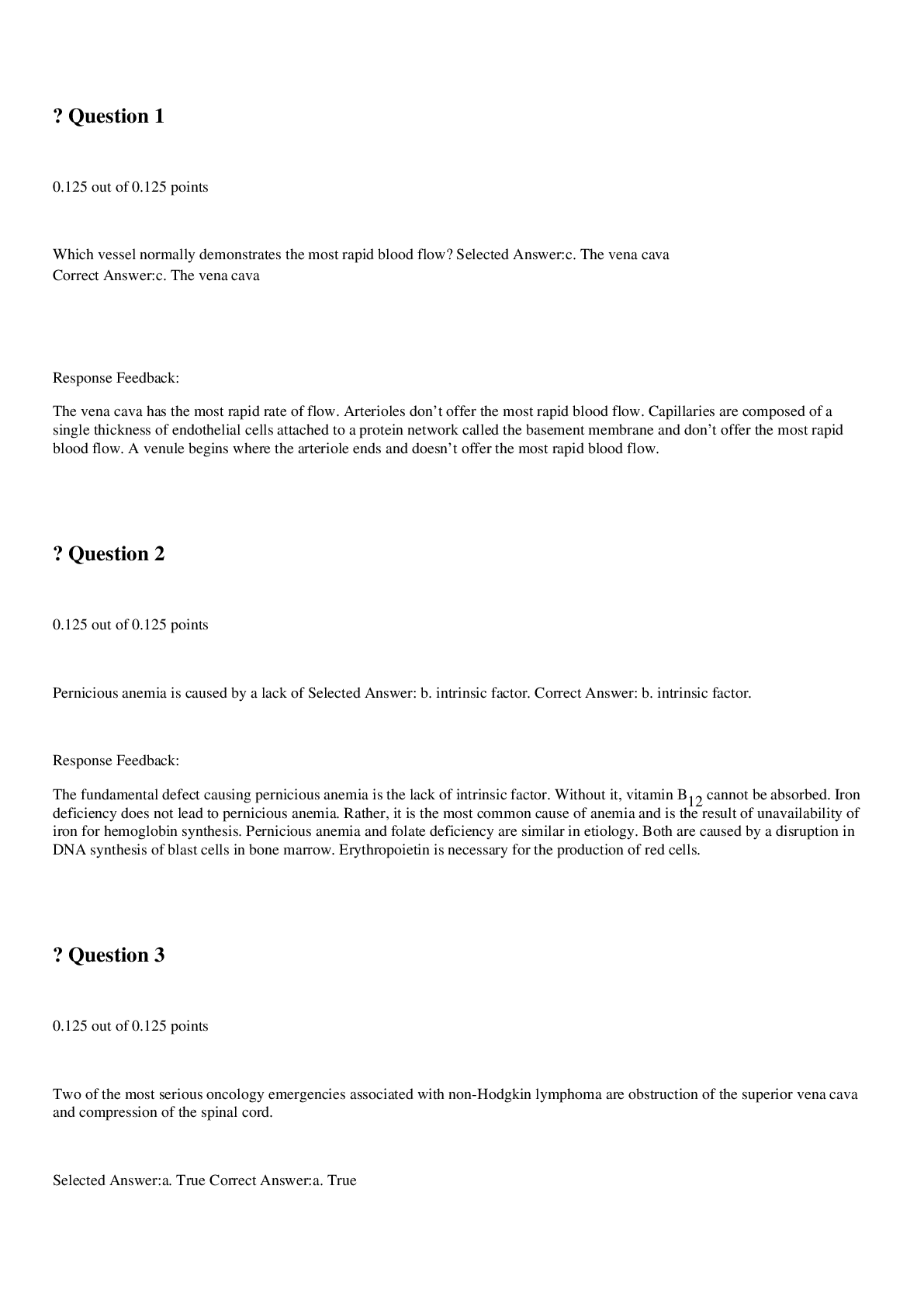

.png)

